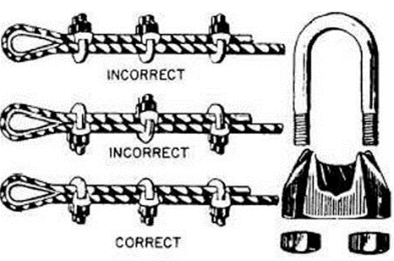
Cable guardrails are commonly seen on construction projects. Although they can provide adequate protection at perimeter edges, they often have issues with the way they are installed. Risk Managers should keep the below in mind to share with their workers and safety committees. If properly constructed and maintained, cable guardrails can provide compliant fall protection in numerous situations.
Typically, cable guardrails are erected by ironworkers at the final interior and exterior perimeters of floors upon completion of installing the deck. However, cast-in-place concrete structures may transition from wood guard rails to cable guardrails installed by carpenters. As part of the floor turnover process for a steel or concrete building, controlling contractors often times direct the contractor who installed the system to leave the perimeter cables in place until the fall exposure is removed by setting windows or curtain wall. At this point, the controlling contractor inspects and accepts control of the fall protection if it meets the following criteria set forth by OSHA 1926 Subpart M regulations:
- The top cable is 42” +/- 3” in height from the walking surface
- The middle cable is approximately 21” in height from the walking surface
- The cable system must be capable of withstanding, without failure, a force of at least 200 lbs. applied within 2” of the top edge in an outward or downward direction
- When tested in a downward direction, the cable must not deflect to a height of less than 39” from the walking surface
- The cable must be at least ¼” in diameter
- Flagging must be present at a minimum of 6’ intervals with high-visibility material
- Must have a smooth surface so an employee does not sustain a puncture, laceration, or possibly snag their clothing
- The system is properly spliced or terminated at walls, columns and posts
It is highly recommended anyone who installs or maintains safety cables be trained and authorized. These systems are initially compliant, but when tampered with or removed by others throughout the course of construction and not replaced properly, they can be a safety concern.
The most common issues observed while performing safety audits on cable guardrails include:
Excessive deflection or sagging – incorporate turnbuckles to allow for easy tightening of the cable. Another option is to keep a cable puller and wire rope grip attachment handy in order to tighten cable guardrails easily.
Minimal or no flagging – apply high-visibility duct tape (yellow or orange) to the cable at a minimum of 6’ intervals.
System not properly terminated – common issues include wire rope clips installed backwards, not enough wire rope clips, and the cables are improperly spliced. The U-Bolt of the clip should be applied to the dead end of the wire rope and the saddle on the live end. This is what the phrase,“Never saddle a dead horse!” refers to. There should be at least two clips installed for wire rope that is ¼” – 3/8” in diameter. Lastly, the preferred method to terminating the wire rope or splicing two wire ropes together is to turnback the ends through each eye as seen in the diagrams.

An alternative method to splicing two wire ropes together is to lay the wire rope ends parallel and correctly apply the proper amount of wire rope clips as depicted in the diagrams.

Toeboards omitted – ensure toeboards, that are a minimum of 4” in height and do not exceed a ¼” gap from the walking/working surface, are present around all open sides.
Ladder access inadequate – provide a gap with a gate between posts where employees can easily climb on/off ladders or offset the opening so employees cannot walk directly through the gap.
Safety cable guardrails can provide OSHA compliant fall protection for employees on a construction project. However, they must be continuously inspected and maintained to ensure compliance with OSHA 1926 Subpart M standards.
For more ways to minimize risk on the job site contact a Marsh McLennan Agency (MMA) advisor.




